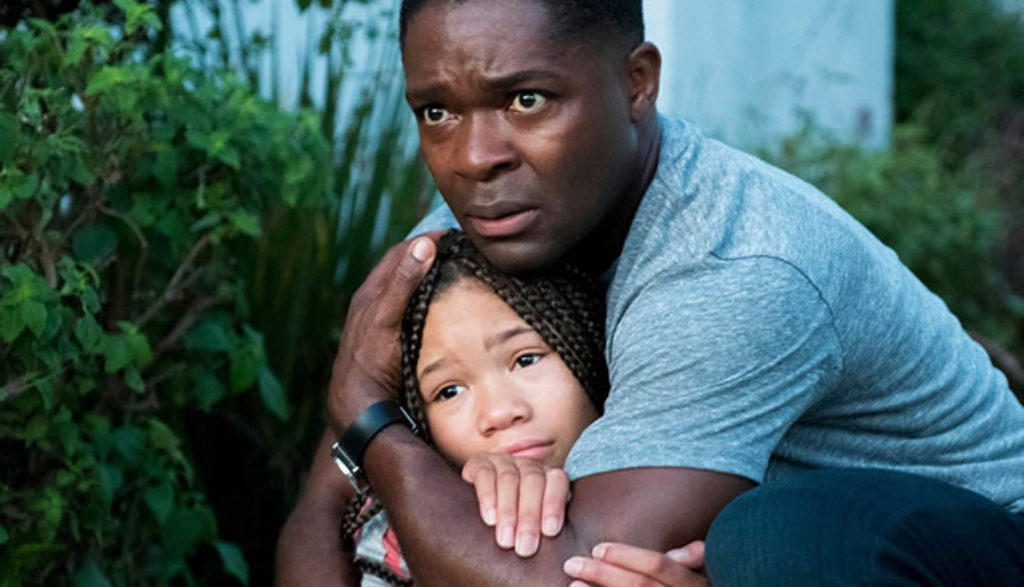
Jack stares blankly at nothing in particular.
He’s a cop, after all, he silently tells himself, over and over. It’s his job to protect and serve. Yet here he is sitting numbly at the funeral of the only family members he had in the world. They’re all dead and he couldn’t … no, he didn’t do a single thing to save them.
The worst of it is his teen niece, Ashley. He loved his brother, in spite of the man’s past self-destructive choices. And, Susan, his brother’s wife, had always been nice enough to him. But when it came to young Ashley, theirs was a special bond. Jack looked at her as something closer to a daughter than a niece.
He was always there to help when she needed it.
He was always there to save her.
This time, though, he was too busy to see the clues. And he’s not fooling himself, there are always clues. His brother’s recent, out-of-character generosity, the little details in the last conversation with Ashley, the broken-off phone call. The clues all should have been clear to Jack.
And they all led to a brutal and horrible act that spread blood and gore throughout his brother’s house. It was so shattering to see. Especially Ashley. She was murdered while hiding in the upstairs bathroom, while hiding and trying desperately to call … him.
Jack is so miserable, so lost, he can’t help but inwardly pray for some kind of miracle, as a tear slowly streaks his cheek. If only God would give him a small chance, a tiny opening, just a moment to somehow reach back and right a terrible wrong, perhaps things could have been different. But, of course, he knows that’s impossible. He can’t even piece together what actually happened that bloody night, except that drugs were somehow in the mix.
So here he sits. Jack is empty. Jack is inconsolable. Jack is a wreck. And then he gets a call on his cell. A call with a familiar, impossible ringtone.
Ashley is calling.
And she needs his help.
Don’t Let Go stresses the importance of the bonds between family members. And it points out that consistent love and investment in a young person’s life can make a huge difference, even for kids in troubled situations. We see Jack go out of his way to help Ashley when her parents fail to do so. He even bought her a cellphone so she could call him in the event of an emergency. And that trusting bond becomes a lifeline, of sorts, that betters both of their lives.
However, as the story unfolds it becomes clear that Ashley’s parents are trying to make positive changes in their lives, too. Their choices aren’t all good, but they appear to be trying to improve their relationship with each other and with their daughter as well.
“Six times a day, people say they’re going to pray for me,” Jack tells a friend at his family’s funeral. “I pray that God will give me a second chance.” Later, that friend refers back to Jack’s statement. “You said you prayed to undo all of this? So did I,” he says.
As already mentioned, Jack gets mysterious calls from his niece, who, we find out, is actually still alive and calling from some time before the murders. Those odd, time-shifting, calls are never explained other than perhaps being a subtle nod toward Jack’s earlier prayers. In fact, when he first gets a call, Jack looks heavenward for a moment and asks, “Where are you calling from?” At one point Jack calls out “Oh God. Oh God!” in prayer-like exasperation.
Ashley’s parents kiss and hug at a birthday party. And her mom, Susan, lies on her bed in a cleavage-baring tank top.
As Jack works with Ashley to suss out clues or take actions in the past, the present sometimes shifts. Because of that, we actually see the aftermath of a couple different murders of Ashley and her family. And we witness a third murder, intense and visceral, take place first hand. Every one of the murder scenes is fairly grisly to behold.
Ashley’s parents’ bodies are both blown open by shotgun blasts. Once, we see Jack’s brother shot in the face. And when Jack first comes upon his brother’s dead form, he cradles the man’s blown open skull. In shock, Jack tries to push the dead man’s brain matter back into place.
Walls and floors get sprayed with gore, and blood pools on the floor beneath the victims. We see Ashley’s dead body in two different places in the home: once in a bathtub, with her blood sprayed across the white tiled walls; and once lying in a crimson-soaked bed.
A man is shot in the back of the head, with graphic results. And someone else is shot in the chest, before falling dead to the ground. Still another man is beaten savagely with a baseball bat.
During his investigations in the present, Jack is shot several different times, too. Once, for instance, he gets hit by automatic gun fire from a drive-by shooting. He bleeds profusely as he staggers around to accomplish something important and nearly dies in a pool of his own blood before the timeline changes. He’s shot two more times as well, each time the wounds staining his shirt with large splotches of blood. Jack is also pummeled and tossed to the ground.
Four or five f-words (including two paired with “mother”) and one s-word join a use or two each of “h—,” “a–” and “pr–k.”
Susan drinks a glass of wine. And some folks drink beer at a party. Jack gets drunk as he wallows in his grief. While Jack looks at crime photos, he makes mention of his brother’s propensity to drink vodka; the camera shows us several pictures with bottles of booze and scattered prescription pills. While looking around the murder scene, Jack spots a cardboard box containing an open bag of cocaine.
Suspicion swirls around possible murder suspects and even lands on Jack at one point as an Internal Affairs officer grills him over his brother’s murder. We find out that there are some dirty cops in the mix, as well.
The sci-fi concept of reaching back through time to change the present isn’t anything new. But this film approaches its suspenseful mix of murder mystery and time travel with such a well-acted, character-focused panache that you’re easily driven to the edge of your seat. You can’t help but find yourself caught up in Jack’s onscreen ticking clock, and empathizing with his desperate desire to save a beloved family member.
But there’s another “catch” here that you should be aware of from a family-friendly perspective. There’s all that bloody murder in the murder mystery side of things.
The most gruesome parts of this pic’s killings are just outside our view. But the punishing violence we do see is still plenty disturbing all on its own.
Don’t Let Go may be a well-made film that viewers won’t quickly forget. But when it comes to the story’s gruesome gore, they may wish that they could.


After spending more than two decades touring, directing, writing and producing for Christian theater and radio (most recently for Adventures in Odyssey, which he still contributes to), Bob joined the Plugged In staff to help us focus more heavily on video games. He is also one of our primary movie reviewers.
Our weekly newsletter will keep you in the loop on the biggest things happening in entertainment and technology. Sign up today, and we’ll send you a chapter from the new Plugged In book, Becoming a Screen-Savvy Family, that focuses on how to implement a “screentime reset” in your family!